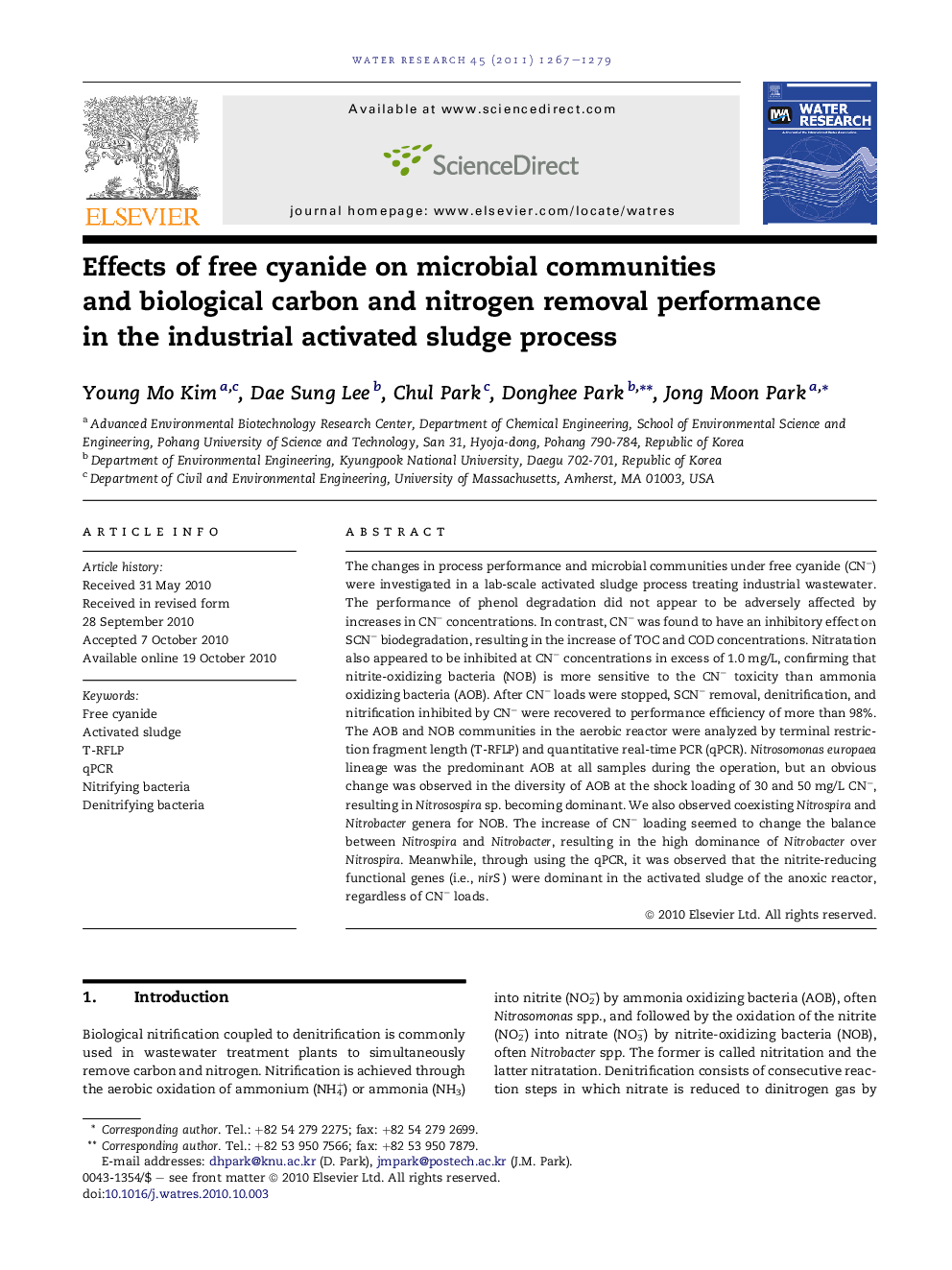| Article ID | Journal | Published Year | Pages | File Type |
|---|---|---|---|---|
| 6368092 | Water Research | 2011 | 13 Pages |
The changes in process performance and microbial communities under free cyanide (CNâ) were investigated in a lab-scale activated sludge process treating industrial wastewater. The performance of phenol degradation did not appear to be adversely affected by increases in CNâ concentrations. In contrast, CNâ was found to have an inhibitory effect on SCNâ biodegradation, resulting in the increase of TOC and COD concentrations. Nitratation also appeared to be inhibited at CNâ concentrations in excess of 1.0Â mg/L, confirming that nitrite-oxidizing bacteria (NOB) is more sensitive to the CNâ toxicity than ammonia oxidizing bacteria (AOB). After CNâ loads were stopped, SCNâ removal, denitrification, and nitrification inhibited by CNâ were recovered to performance efficiency of more than 98%. The AOB and NOB communities in the aerobic reactor were analyzed by terminal restriction fragment length (T-RFLP) and quantitative real-time PCR (qPCR). Nitrosomonas europaea lineage was the predominant AOB at all samples during the operation, but an obvious change was observed in the diversity of AOB at the shock loading of 30 and 50Â mg/L CNâ, resulting in Nitrosospira sp. becoming dominant. We also observed coexisting Nitrospira and Nitrobacter genera for NOB. The increase of CNâ loading seemed to change the balance between Nitrospira and Nitrobacter, resulting in the high dominance of Nitrobacter over Nitrospira. Meanwhile, through using the qPCR, it was observed that the nitrite-reducing functional genes (i.e., nirS) were dominant in the activated sludge of the anoxic reactor, regardless of CNâ loads.
